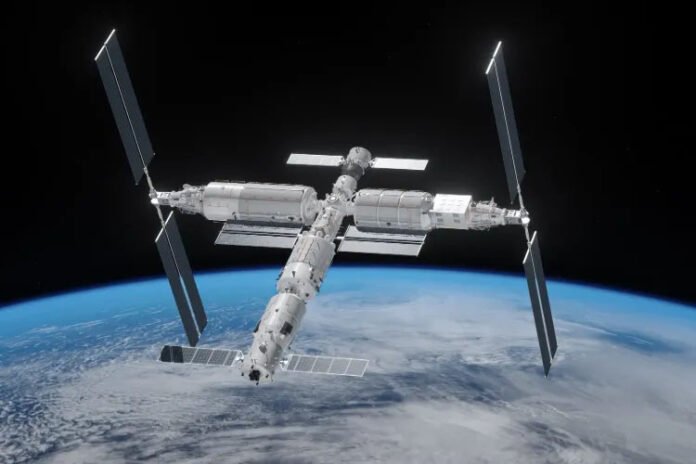New Delhi: Viewing space as a critical factor in the military domain, China places much national pride on this like it does on land, sea and air with its supreme leader Xi Jinping seeking to make the top most world power displacing the USA.
With this as its goal, China is putting immense investment into scientific, civil and military space assets.
The US Space Force, in an updated space threat fact sheet published in April, described China’s and Russia’s advances as “a serious threat to US national security interests in, from and to space”. In fact, the release warned starkly, “China is the pacing challenge and is rapidly improving its space capabilities to track and target US military forces. China and Russia are pursuing a wide range of counter-space capabilities to disrupt and degrade US space capabilities.
The statistics are certainly impressive. Last year, China conducted 68 space launches. Cumulatively, these rocket launches placed 260 individual payloads into orbit, of which 67 – or 26 per cent – were satellites capable of performing intelligence, surveillance and reconnaissance (ISR).
Phenomenally, China’s on-orbit presence has snowballed 620 per cent in the past decade. It now has more than 1,060 satellites in orbit, which is 875 more than it had in 2015. Of this array of satellites, more than 510 can perform ISR for the People’s Liberation Army (PLA) using a range of optical, multispectral, radar or radiofrequency sensors.
Such a satellite network can comb the Earth’s surface looking for American aircraft carriers, air wings or other expeditionary assets.
A significant example of such an ISR satellite is the remote-sensing TJS-12 launched into geosynchronous Earth orbit (GEO) in December 2024. The US Space Force claimed, “The satellite could allow China to persistently monitor US and allied forces in the Pacific region.”
Dr Andrew Erickson, Professor of Strategy at the US Naval War College, commented, “Of fundamental concern is the sheer number of satellites China now has in orbit, particularly for ISR, as part of its systematically building out a comprehensive, capable reconnaissance-strike complex.”
To rival the likes of Starlink, China is also creating a proliferated constellation of G60 communications satellites in low Earth orbit (LEO). By early 2025, 72 were already orbiting the Earth, with 648 expected by year’s end. Later, by 2030, a planned 14,000 of these communications satellites will be encircling the Earth. Another Chinese company, the China Satellite Network Group, launched ten communications satellites in 2024, the first of a planned proliferated LEO constellation of 13,000 satellites. Incidentally, after observing Ukraine’s use of Starlink in its war against Russia, China is concerned about that network and SpaceX’s relationship with the US government.
It fears, perhaps in an overreaction, that these satellites could transmit data and engender new combat styles for the USA.
Weapon targeting is another critical utilisation of Chinese space-based assets. Concernedly, the US military stated, “China’s improving space-based capabilities combine with the PLA’s growing arsenal of long-range precision weapons to enable long-range precision strikes against US and allied forces.”
In 2015, China publicly announced space was “a new domain of warfare”. At that time, it organised space capabilities under the newly formed PLA Strategic Support Force, although this was duly dissolved on April 19, 2024. For managing space assets, it was superseded by the PLA Aerospace Force, whose purpose is leveraging outer space for warfare – such as providing imagery, performing reconnaissance, collecting intelligence, enhancing the accuracy of strikes, and enhancing communications as well as denying space to adversaries.
The importance of the Aerospace Force is seen in the fact that it is directly subordinated to the Central Military Commission (CMC), the highest military body in China.
John Costello, writing an assessment for The Jamestown Foundation think tank in the USA, said the Aerospace Force does not strictly align with the PLA’s regional theatre command construct. This indicates its strategic and functional mission, he asserted.
The PLA Aerospace Force has seven primary “space bases”, complemented by various bureaus and specialised centres that assure and support space missions.
The seven bases are as follows, and their names speak to the type of missions the force performs. Base 23 is the China Satellite Maritime Tracking and Control Department in Jiangsu Province. Base 25 is the Taiyuan Satellite Launch Centre in the mountains of Shanxi Province, and Base 26 is the Xi’an Satellite Control Centre in Shaanxi Province. Base 27 is the Xichang Satellite Launch Centre in Sichuan Province, whereas Base 35 is the newly formed Battlefield Environment Support Base in Wuhan to detect foreign ballistic missiles.
Base 36 is Kaifeng Base in Henan Province, and it appears focused on space equipment research and development, testing and evaluation, according to Costello.
Finally, Base 37 is the Early Warning Base in Lintong, Shaanxi Province. Its mission is space situational awareness, missile early warning and tracking space debris and satellites. Base 37 is thus in charge of several large phased-array radar sites across China to provide an overall picture of space activity and to detect foreign ballistic missiles.
Costello discerned several implications about China’s space warfare intentions. One is that space is integral to PLA operations. “By placing all military space capabilities under one service, the PLA seeks to ensure that space assets can be centrally managed and rapidly brought to bear in a conflict. As with the parallel Cyberspace Force and Information Support Force, the Aerospace Force is a bellweather of conflicts Beijing is preparing for.”
If China ever invades Taiwan, for instance, then the force would play a pivotal role from the outset. The PLA would attempt to secure space for its own use whilst simultaneously denying it to others.
Chinese government statements conceal the true purposes of its innumerable satellites, especially the more esoteric ones. However, it is clear that Xi and the PLA are reaching upwards to dominate space in times of peace and of war. After all, whoever controls space controls the initiative in war.






